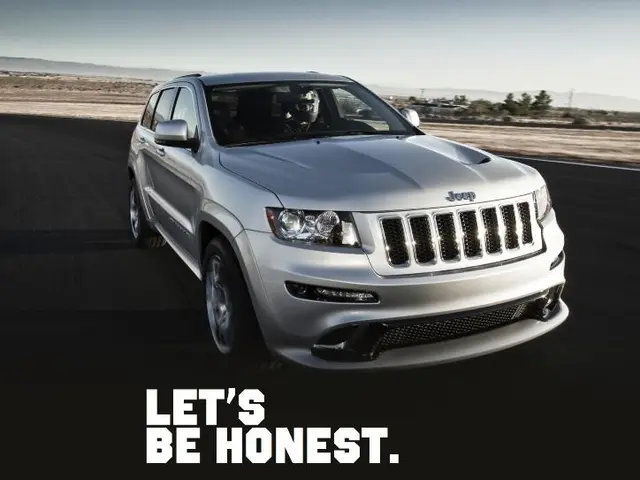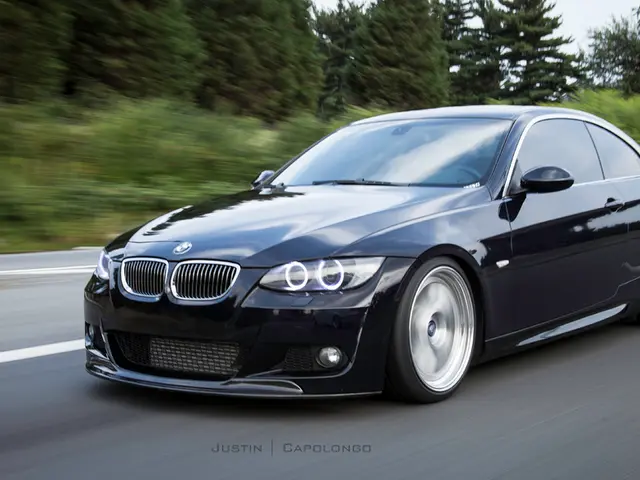Renault Scénic Fourth Generation: The TÜV Verdict and Beyond
Revised Generation of Renault Scénic: Continues to Fall Short of Leading Position
A used van like the Renault Scénic can be a perfect choice for transporting people, especially if you're after practicality and style. Let's take a closer look at the fourth generation Renault Scénic, a veteran in Renault's lineup, and what TÜV inspections have to say about it.
Introduced in late 2016, the fourth-generation Scénic was available until 2023. With the fifth generation now in town, offering only electric powertrains, it's time to scrutinize the good old Scénic IV.
Quality
TÜV inspections exhibit a somewhat split verdict on the fourth-generation Scénic. While improvements have been made compared to its predecessor, some weak points remain. Specifically, the axle suspension has been identified as a vulnerability, like in heavier vans and SUVs. The lighting system also seems to need some work in terms of reliability.
Body and Interior
The designers have crafted an attractive body for the compact van, made even more noticeable by the standard 20-inch wheels. It was available as a 4.41-meter-long five-seater (until 2022) and as a 4.64-meter-long Grand version, accommodating up to seven people. The generous wheelbase of 2.73 meters ensures ample space for passengers and luggage. The rear bench can be slid in the longitudinal direction by 16 centimeters for more knee or storage space. With a range of 505 to 1,554 liters of luggage compartment volume, the Scénic offers enough space for your essentials. After 2020, the Scénic received a facelift with subtle modifications to the front.
Engines and Drivetrain
Renault equipped the Scénic IV with both gasoline and diesel engines. From launch, a 1.2-liter turbocharged four-cylinder engine was available in two power levels: 85 kW/115 PS and 97 kW/132 PS. Later in 2017, this engine was replaced by a 1.3-liter turbo, offering 115 PS, 103 kW/140 PS, and 120 kW/160 PS. Gasoline engines have fuel consumption figures ranging from 5.4 to 6 liters per 100 kilometers.
The diesel range included a 1.5-liter engine with 81 kW/110 PS and a 1.6-liter engine with 96 kW/130 PS and 118 kW/160 PS. The mild hybrid version of the 110 PS diesel, available between 2017 and 2018, has the best fuel efficiency, consuming an average of 3.4 liters per 100 kilometers. Other diesel engines consume an average of 3.9 and 4.5 liters per 100 kilometers. Renault unveiled a 1.7-liter four-cylinder engine with 88 kW/120 PS or 110 kW/150 PS in early 2019, and the Scénic has only been available with gasoline engines since late 2020.
Power is typically sent to the front axle via a manual six-speed gearbox, but seven-speed or six-speed dual-clutch transmissions are available for the 160 PS engines. These alternatives are the preferred choice for 160 PS engines, provided you can forgo the manual gearbox on the 115 and 132 PS gasoline engines and the 130 PS diesel engine.
Equipment and Safety
The base trim (Life) came with standard features such as air conditioning, DAB radio, emergency braking assist, cruise control, and traffic sign recognition. Higher comfort levels (Experience, Intens) offered additional goodies like keyless entry, adjustable center armrest, parking assist, lane keeping assist, and a large touchscreen infotainment system. The top trim (Bose Edition) boasted features such as a navigation system, heated front seats, and a Bose surround sound system. Following the facelift, the trim levels were renamed Zen, Intens, and Black Edition.
What Lies Beneath
Although the new car offerings might be slimmer, users seeking the versatility of vans can still find options in the pre-owned market, including the reliable Renault Scénic IV. Roughly 500 used Scénic IV models can be found on mobile.de, starting at around 10,000 euros. For peace of mind, it's always recommended to have a professional inspect your desired model before signing on the dotted line.
Remember, the Scénic IV may exhibit common issues with the suspension, particularly wear on components like bushings and shock absorbers, and alignment or noises during test drives. The lighting system may also face electronic faults, water ingress, or condensation; these areas should be inspected carefully.
Source: ntv.de, Holger Holzer/sp-x
** Related: Renault Models, Used Cars**
- The automotive industry offers a variety of options for those seeking a versatile transportation solution, and used cars like the Renault Scénic IV can be an excellent choice for practically-minded consumers.
- The fourth-generation Scénic's finance options are diverse, with both gasoline and diesel engines available, alongside different transmission choices, making it accessible for a wide range of buyers in the used car market.
- The maintenance requirements for cars such as the Renault Scénic IV include monitoring the suspension system, especially the axle and components like bushings and shock absorbers, and inspecting the lighting system for potential vulnerabilities, including electronic faults, water ingress, or condensation.
- The automotive lifestyle often values practicality and style, and the Renault Scénic IV, with its attractive body, spacious interior, and versatile powertrain choices, fits well within that perspective, providing a blend of functionality and aesthetics.








